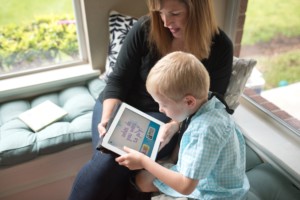 In this edition of Member Monday, Betsy Furler highlights her passion for, and the importance of, accessibility in technology.
In this edition of Member Monday, Betsy Furler highlights her passion for, and the importance of, accessibility in technology.
By Betsy Furler, Your App Lady
Within the tech community, accessibility can sometimes be a dirty word. In many cases, making technologies accessible is often an afterthought, or it’s a functionality addressed only when compelled by legal action. In reality, accessibility affects everyone. And for businesses, it’s a key tool that will decide whether your product is usable, marketable, and effective for a broad consumer base.
As a speech pathologist, I have worked with clients at every stage of life — from those just born to the very elderly. Throughout my career, I have been amazed by the power of technology to assist and enhance the lives of people with disabilities, regardless of their age. This experience has proven to me that when designing a product, developers should always consider the broadest swath of users and design the product for ease of use, accessibility and usability. That’s a trusted method to ensure you make a great, accessible product.
The fact of the matter is that we should all care about accessibility because we will all need accessible tech at some point of our lives. As we get older, we often lose our hearing and vision. Our fine motor skills become less precise, and our memory decreases. Even before then, we may encounter situations in which we cannot speak, see, hear, walk, or think as we normally would, leading us to interact with technology and process information in different ways. Our technologies should account for each of these prospective and potential situations, and many of them already have.
Take, for example, audio books. Access to this assistive technology has revolutionized the way many people, including me, consume books, newspapers, magazines, or other written content. In an average year, I can easily listen to upwards of 100 books during travel, daily commutes, or while doing basic tasks. Though the ability to listen to audio books helps me to multitask, it was traditionally developed as an accessibility feature to help the blind, seeing impaired, or those with cognitive disabilities. This simple accessibility feature has increased productivity and the potential for professional development for members of the disability community and for me.
This is just one example of the many ways an accessible product can benefit the broader community. By considering the accessibility of your software, website, or app, you are making it better for everyone.
I am passionate about working with organizations to develop better, more accessible technologies, websites, and apps that enhance people’s lives. My extensive experience working in clinical settings with older adults and people with disabilities has given me a keen understanding of how people interact with the world. We experience the world with different abilities throughout our lives, whether we are born with a permanent disability, develop one as we age, or face temporary disability as a result of illness or injury.
While accessible products may be developed for some, they hold benefits for all. I encourage you to join me in encouraging and incorporating accessible design into the technologies of today and those of the future.
I’ll be joining the App Association to explore the importance of accessibility at this year’s SXSW conference. If you want to learn more, join us in Austin, Texas on March 15 for our panel: Y35 W3 C4N: Innovations in Accessibility.
